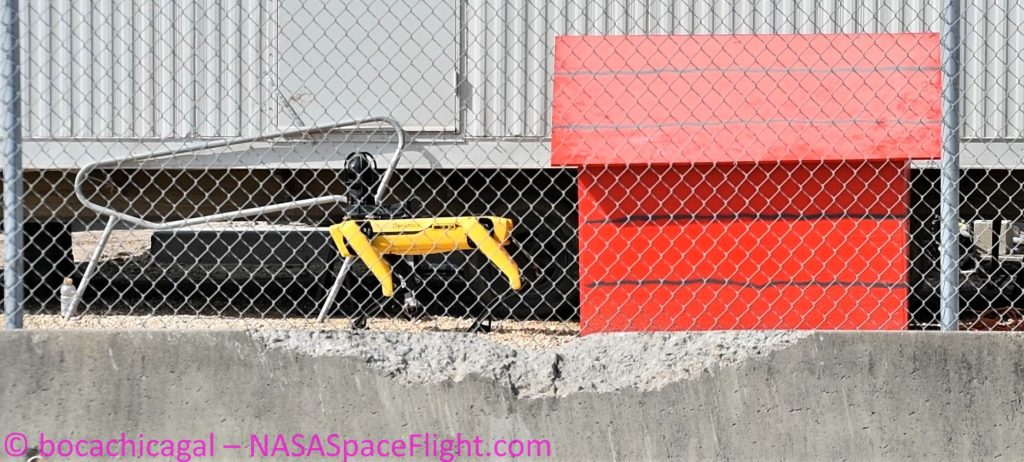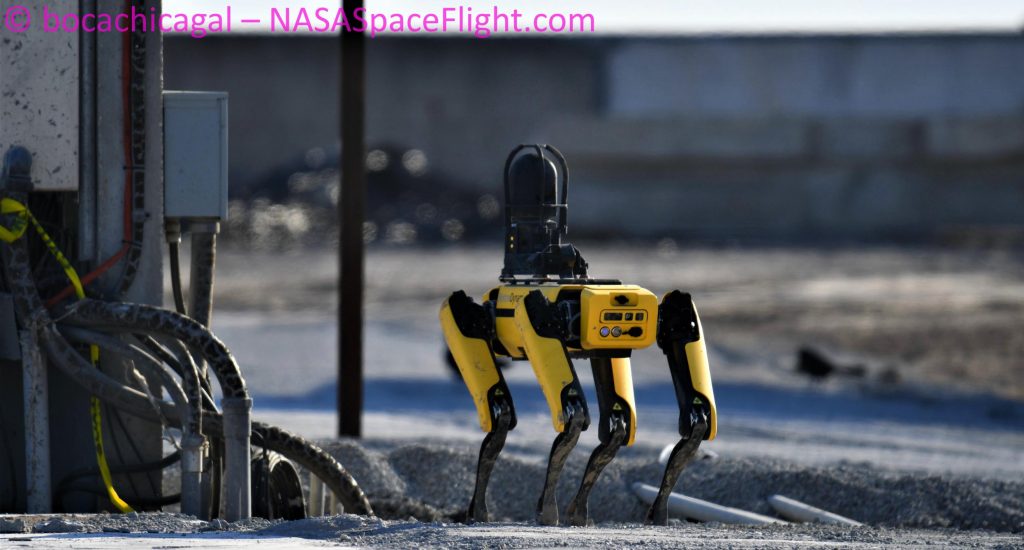SpaceX’s first orbital-class Starship prototype has survived the first of several expected Raptor tests, kicking off an engine test campaign that could mark a number of new milestones.
With just 20 minutes left in a seven-hour test window, Starship prototype S20 (Ship 20) appeared to either unsuccessfully attempt its first Raptor static fire test or complete its first intentional Raptor preburner test around 11:40 pm CDT (UTC-5) on Monday, October 18th. Rather than a violent jolt and roar kicking up a cloud of dust, Ship 20 came to life with a (relatively) gentle fireball that lasted for several seconds.
Preburner test in the books for Ship 20. Hopefully, we will get a static fire tomorrow. 5 pm to 12 am is the window once again.
— Michael Baylor (@nextspaceflight) October 19, 2021
In pursuit of maximum efficiency, Starship’s Raptors require two separate closed-cycle gas generators known as preburners to – as the name suggests – turn its cryogenic (very cold) liquid oxygen and methane propellant into a hot gas mixture that the engine re-ignites to produce thrust. A preburner test, if that’s what Starship S20 completed on Monday night, thus involves activating only the first half of that equation, rapidly producing a giant cloud of flammable gas without actually igniting to produce meaningful thrust.
Preburner tests have become increasingly rare as SpaceX’s sea-level Raptor design matured over the course of tens of thousands of seconds of ground testing and, later, thousands of seconds of ground and flight testing on Starship prototypes. Starship S20 had two engines during its first test. One Raptor was the sea-level optimized variant SpaceX has built dozens of and fired for 30,000+ seconds on the ground. The other, however, was a vacuum-optimized Raptor with a much larger nozzle – the first of its kind to participate in any kind of test while installed on a Starship prototype.
Completed a full duration test fire of the Raptor Vacuum engine at SpaceX’s rocket development facility in McGregor, Texas pic.twitter.com/0GPSdSifnn
— SpaceX (@SpaceX) September 25, 2020
It’s possible that Raptor Vacuum (RVac) engines have even more design tweaks outside of their larger expansion nozzles. Regardless, SpaceX has only built and tested around 10 RVac prototypes over the last year, making it a less mature engine than its sea-level cousins. That could explain why SpaceX appears to have chosen to perform a preburner test first instead of jumping straight into a wet dress rehearsal and static fire. That also means that October 18th’s test was likely the first time a Raptor Vacuum engine has (partially) ignited while installed on a Starship.
The above view from a uniquely situated LabPadre camera all but guarantees that Starship S20’s first engine test was a Raptor Vacuum preburner test and doesn’t offer any strong evidence that it was a two-engine test. Ship 20 still has a number of crucial tests ahead of it before SpaceX can even begin to consider it (or its general design) qualified for flight. That includes multiple static fires, including the first side-by-side static fire of two Raptor variants (RVac and Raptor Center), the first simultaneous static fire of more than three engines, and the first Starship static fire with a full six engines installed.
Ship 20’s preburner test is SpaceX’s first Starbase Raptor test since the first Super Heavy booster static fire in mid-July, almost exactly three months ago.


With any luck, S20’s first preburner test has opened the door for an inaugural static fire of one or both installed engines later this week. However, during that preburner test, the giant fireball Raptor Vacuum emitted appeared to ignite several pieces of pad hardware. SpaceX took advantage of one of at least two Boston Dynamics Spot robots on-site to physically walk a camera up to the active pad and inspect several secondary fires. Ultimately, SpaceX appears to have successfully safed Starship with no damage to the vehicle itself, but odds are good that the sources of those secondary fires will need to be fixed and any pad damage repaired before Ship 20 proceeds into static fire testing. SpaceX has two more 5pm-12am test windows scheduled on October 19th and 20th.





